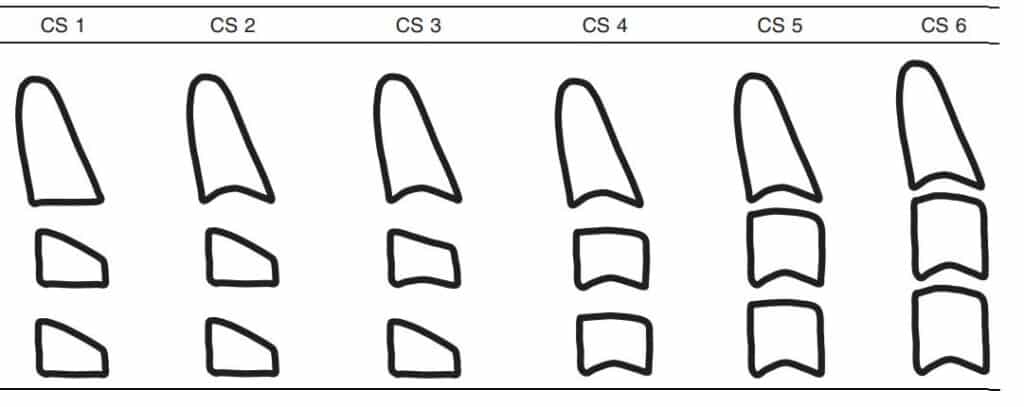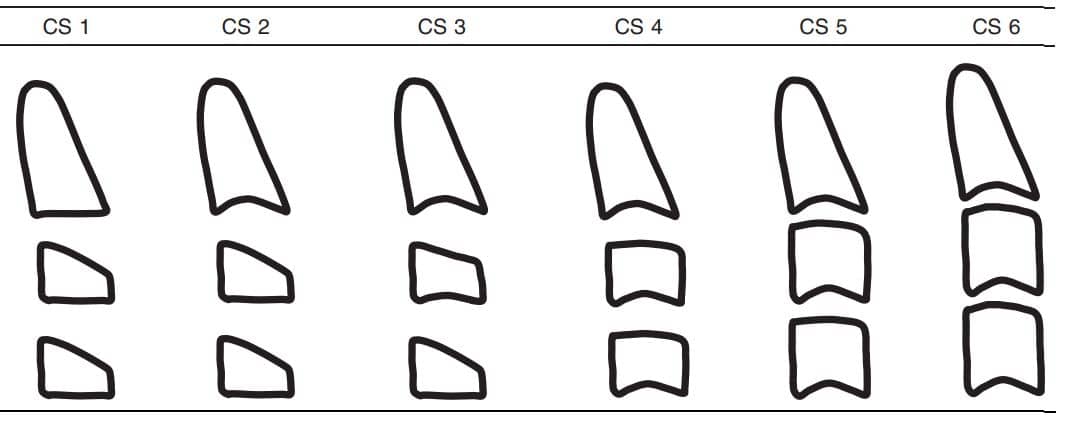Sometimes, we want to know how much growth potential our patients have. There are a few methods. All of them are not perfect. One of the most cost-effective method is by looking at the cephalogram. You need to be familiarize with the cervical vertebral maturation staging (CVMS).
Six maturational stages of the cervical vertebrae can be determined, based on the morphology of C2, 3, and 4.
How to determine CS stage
The first step is to evaluate the inferior border of these three vertebral bodies (C2, C3, C4).
CS 1: inferior surface of all three vertebral bodies is flat.
CS 2: inferior border of C2 is notched.
CS 3: inferior border of C3 is notched. Less than 1 year prior to peak of mandibular growth
CS 4: inferior border of C4 is notched. 1 year or more beyond growth peak
CS 5: C3 and C4 are rectangular horizontal and square.
CS 6: C3 and C4 are rectangular vertical

Typically, CS 1 and CS 2 are considered prepubertal, CS 3 and CS 4 circumpubertal, and CS 5 and CS 6 postpubertal.
McNamara Jr JA, Franchi L. The cervical vertebral maturation method: A user’s guide. The Angle Orthodontist. 2018 Mar;88(2):133-43.
Chronology of Dental Development
It is important to know when teeth start to calcify, finish crown and root formation, and erupt. Table 3-2 of Proffit’s contemporary orthodontics is more simple.
Pathology of the Hard Dental Tissues, First Edition. Albert Schuurs.
© 2013 Albert Schuurs. Published 2013 by Blackwell Publishing Ltd.
